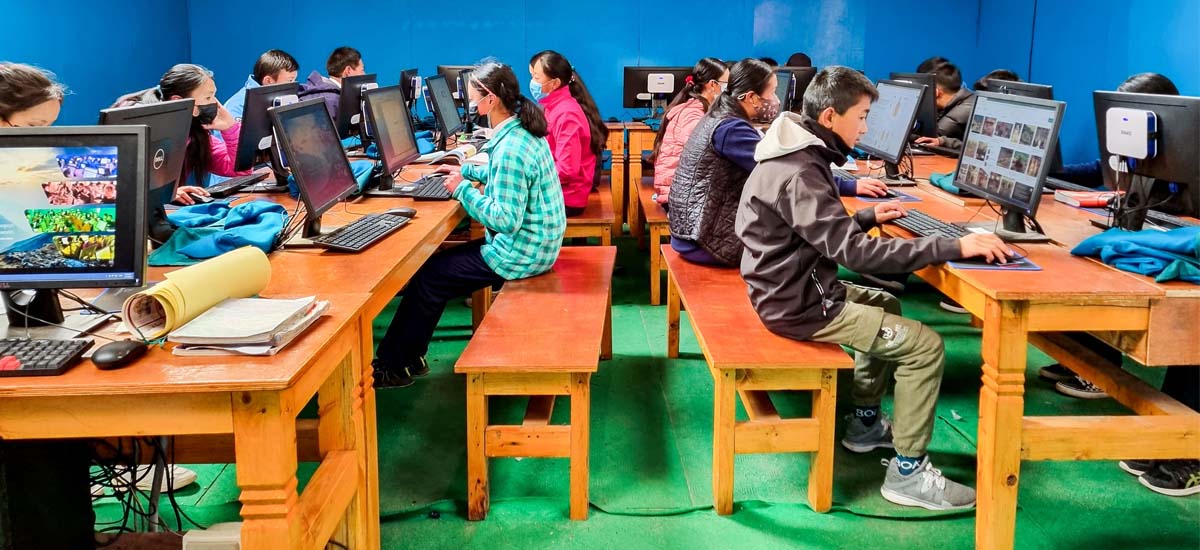
What Is Meaningful Connectivity? – Internet Society
In Nepal, a couple of days’ hiking away from the Everest Base Camp, the communities of Khunde and Khumjung were considered connected by normal standards. After all, if people in the villages hiked up a mountain, they could get some reception to send messages. Meanwhile, in the local school’s computer lab, children were learning about the Internet through printouts.
Would you consider this access meaningful?
Now imagine living in an area where service is available, yet you and your neighbors can’t afford Internet access because fees are as high as your rent or monthly groceries. Or perhaps that your only connection is one where a tech company offers free access to social media and messaging apps through a local operator—but when your children need to study online or you need to file taxes on a government website, you must pay extra.
The Internet is for everyone. But for that to be a reality, we need more than to connect the unconnected: we need to make access meaningful.
What Makes Access Meaningful?
The Internet Society helped develop the definition of meaningful connectivity used by the International Telecommunications Union (ITU): the possibility for everyone to access the Internet in optimal conditions, at an affordable cost, whenever and wherever needed. What this looks like might change from place to place. To measure this, the ITU identified six pillars that help determine whether connectivity is truly meaningful:
Quality—Connectivity needs to be fast and reliable to allow people to take advantage of all the opportunities the Internet offers. This is why peering and Internet exchange points are so important: they help improve the traffic of local content, making it faster and more resilient.
Availability—To be meaningful, connectivity needs to be always available for anyone to use. To achieve this, we need truly reliable local networks, like mesh wireless networks or fiber, in addition to a reliable source of power.
Affordability—Next, connectivity needs to be available at a price that the people who will use it can afford. Today, several areas that are considered “connected” or covered by service providers often still exclude people because prices are too high for low-income and rural communities. Shared infrastructure and Internet exchange points are ways to make the Internet more affordable.
Devices—To access the Internet, you need to have an available device, like a phone, a tablet, or a computer. But the devices available need to be appropriate to fulfill peoples’ needs. A phone might be enough when someone wants to connect with loved ones through a video call, but it’s limiting when a child needs to watch classes online and do their homework.
Skills—Even with affordable, high-quality access and proper devices, people need the digital skills to use the Internet confidently and safely. Connectivity solutions need to take this into account and come with skills development initiatives
Security—Finally, for connectivity to be truly meaningful, it also needs to be safe and secure. This means that the infrastructure needs to be secure, such as local servers that have limited physical access, and also that navigating it is a safe experience. People should not be vulnerable to others eavesdropping on their messages, for instance. That’s what encryption is for.
How do we move from 2.6 billion people offline to a world where everyone not only has Internet access, but meaningful Internet access? There are several ways to get started, like supporting community-centered connectivity solutions, promoting inclusive access policies, easing access to funding, and other points we addressed on the blog: “How to Achieve Universal Connectivity.” In addition to connectivity-specific policies and actions, the ITU highlights other needs, such as economic development, more investment, better policies, and available content.
What Meaningful Connectivity Looks Like
A key enabler of meaningful connectivity is innovation. The way we have connected most of the world is not enough to get meaningful access to everyone, and we need new solutions.
That’s where community-centered connectivity solutions offer a viable path toward universal and meaningful connectivity. They are deployed by the very people who will use them, so they know upfront what needs they want to fulfill. Also, once these solutions are in place, they are managed and run by people within the community, allowing them to adapt to evolving needs and opportunities.
These solutions are working everywhere in the world because they are innovative and adaptable.
Going back to Nepal, the communities of Khunde and Khumjung took the Internet to one of the remotest places in the world with their own hands. They started out by making connectivity available: people could access the Internet at the school’s computer lab and at a community center, both of which offered Wi-Fi and computers. A first step up from climbing a mountain to send a message.
Then, local needs showed that people wanted to have Internet in their homes and lodges where hikers on the way to Everest stop. The community network evolved, putting together a local fiber network that connected all homes in the villages. These solutions also included training that helped people make the most of their access and learn to troubleshoot the network.
They’re not alone. Around the world, people are creating innovative solutions to connect their communities. The Internet Society has supported these local champions for more than a decade, and you can too. Learn how we are helping connect the unconnected.
Image © João Aguiar

